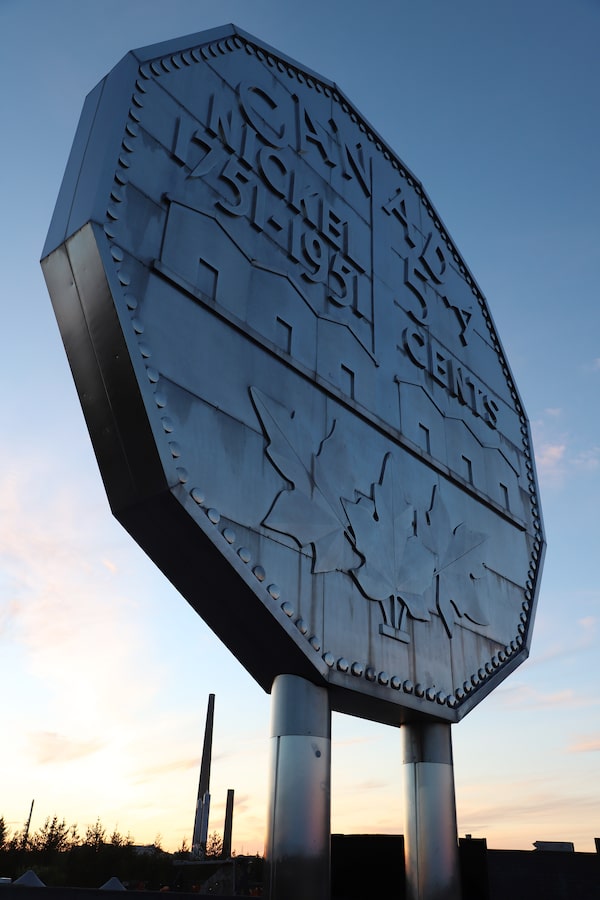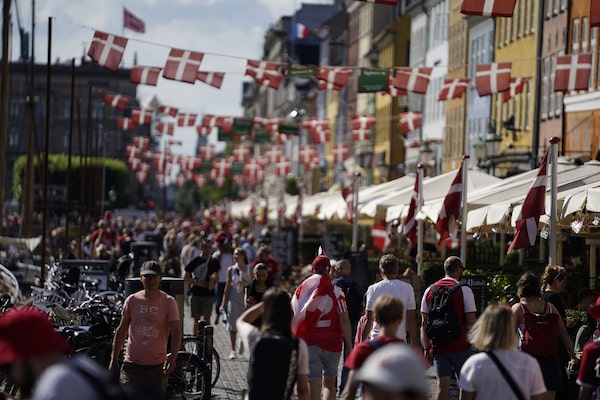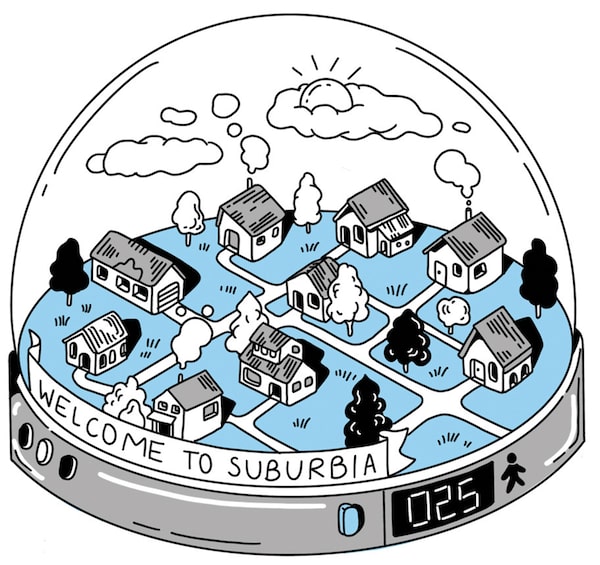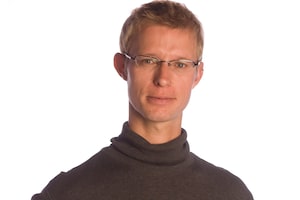The sun shines on downtown Kelowna and Okanagan lake on a September morning. According to the city, its population is more than 143,000, enough to be considered an urban area by Statistics Canada – but it falls short of criteria for a new international definition of 'city.'Lucas Oleniuk/The Globe and Mail
The good folks of Kelowna believe they live in a city. In fact, local tourism boosters bill the place as “the largest city in British Columbia’s Okanagan Valley.” But under a new international definition devised over years by the European Commission, OECD, World Bank and others, and endorsed in March by the United Nations, Kelowna doesn’t make the cut. It’s a town.
Also not a city is Fredericton, the centuries-old capital of New Brunswick that traces its roots to Fort Nashwaak, built by the French in 1692. Nor is the Northern Ontario community of Sudbury, nor the Quebec municipalities of Saguenay and Lévis – all three of which have populations hovering on either side of 150,000.
The new definition, based on population and density thresholds, was devised largely for the purposes of international statistical comparison. No one is going to insist that these places take the word “city” off their letterhead. But the demotions risk ruffling feathers among people who believe they live in a metropolis and raise a philosophical question: What is a city?
“Any day I would match Sudbury against cities much larger than ours,” Mayor Brian Bigger said firmly, arguing that whether a place is a city has to be judged not just by the density or number of people, but by what they achieve. He pointed to work at the Sudbury Neutrino Observatory that had led to a Nobel Prize for physics, an honour he suggested could not be claimed by every place the UN judged “a full-fledged” city.
“The critical and the essential minerals that are required for the future technologies, battery technologies and all that, all come from the Sudbury basin … so we contribute in a large way to the world,” he said.

Sudbury, population 161,000, is home to the Big Nickel and the now-decommissioned Superstack behind it, the second tallest chimney on Earth.Gino Donato/The Globe and Mail
The mayor of Kelowna declined comment on his community’s status. Inquiries with communications staff in Fredericton about an interview with its mayor went nowhere.
The UN definition involves three steps. An area is divided into a one-kilometre-square grid. Each box is assessed to see if it has at least 1,500 residents. If there are enough contiguous boxes with that minimum density to total a population of more than 50,000, it’s a city.
A world map showing what is, and isn’t, a city under the new UN definition
Although the new definition does not supersede Canadian law, it does provoke interesting questions. To some degree – riffing off the standard for obscenity coined by former U.S. Supreme Court justice Potter Stewart – you know a city when you see one, but in truth they’re not easily defined.
It can get surprisingly complicated. The essence of city-hood can be viewed in legal and political terms. It can be based on population, analyses of infrastructure, variety of amenities or type of buildings.
But York University research chair in sub/urban studies Roger Keil makes a point similar to Sudbury’s mayor: The key factor is a lack of insularity, that the place is part of a global network. “It’s a question of your actual connectivity with the rest of the world,” he said. “You can say all you want, and your town council can decide they want now to be a city council, but if you’re not a city, people will see that you’re not a city.”

Lakeside sights in Sudbury and Kelowna: At top, the Science North museum complex on the shore of Northern Ontario's Ramsey Lake; at bottom, a visitor from Toronto sits on a statue of Okanagan Lake's fabled monster Ogopogo.Gino Donato and Lucas Oleniuk/The Globe and Mail
Why would this matter? Choosing to present as a city – or not to – can speak to a municipality’s self-image and aspiration.
The town of Markham, north of Toronto, rebranded as a city in 2012 as a way to reflect its fast growth and maybe get a bit more attention internationally.
To the west of Toronto, meanwhile, the community of Oakville continues to insist it is a town – in spite of a population of more than 200,000 – a designation that aligns with its skepticism about development.
“Whether we’re city people or rural people or village or town, those words do start to define a place, and then that definition starts to get built up and it has implications,” said Matti Siemiatycki, a professor in the geography and planning department at the University of Toronto.
“These discussions, even if they are somewhat abstract and probably not anyone’s top priority, they do become relevant when you then start to talk about [things] like how does business get attracted and what type of activities happen there and who feels like they’re included there, or excluded.”
(For what it’s worth, the new UN definition doesn’t take a position on either Markham or Oakville, instead lumping both into a greater Toronto conurbation.)
A scooter rider passes Kelowna City Hall.Lucas Oleniuk/The Globe and Mail
Canada is often described as being a very urban country, with a reputed 80 per cent of citizens residing in cities or suburbs. But that characterization relies on a modest definition of what is urban.
Dan Rogers, who heads Kelowna’s Chamber of Commerce, remembers ruefully the reaction he got a decade ago at the Shanghai World Expo, while introducing himself in his then role as mayor of Prince George, B.C.
“I went to China in 2010 and had the audacity of standing up in front of a group and saying ‘I’m from a big city in Canada, in northern British Columbia, population of 85,000’ and then there was silence across the room as most of them turned and looked at each other [as if], ‘Did he say big city?’ ” he said.
According to Statistics Canada, communities of more than 10,000 people are considered urban. This means that Strathmore, the small agricultural and bedroom community east of Calgary, officially squeaks into city status, even though it calls itself a town.
Complicating matters, provinces have their own approach.
Cities in British Columbia start at just 5,000 people – and these places can remain cities even if the population later drops below that figure. Alberta uses a 10,000-resident threshold. Quebec has no definition of a city.

Danish flags fly over a Copenhagen street this past summer. Copenhagen has more than 600,000 people, but to qualify as a city in Denmark, it would need only 200.MADS CLAUS RASMUSSEN/Ritzau Scanpix/AFP via Getty Images
Notions about what is a city vary wildly around the world. In Denmark, a city starts at just 200 people while in China you need 100,000. There are small communities in Europe that retain the designation of city because of their political importance centuries ago. One extreme example is Staverden, in the Netherlands, which received city status in 1298 and retains it today, in spite of having only 30 inhabitants.
It was because there were so many different takes on this that the European Commission began working 13 years ago on a global standard. The process eventually included other international bodies such as the Organization for Economic Co-operation and Development. A total of 115 countries were consulted and, in March, the United Nations adopted the definition.
It was an occasionally bumpy road to get to this point, acknowledged Lewis Dijkstra, head of the European Commission’s economic analysis sector. He said officials in Mongolia were “terribly worried” that their capital of Ulan Bator was too low-density to make the cut, though in the end it did. And there were surprises, including how well a definition originally devised for European cities worked in other parts of the world.
One indication of the validity of the new definition came when researchers overlaid it on all the world’s subway systems, a fundamentally urban type of infrastructure. “We figured out that, I think, 99 per cent of all the metro stops fall within the boundary of our city definition,” Mr. Dijkstra said.
For Cherise Burda, who heads City Building Ryerson, which seeks to showcase urban innovation at the university, a value of the new definition might be that it goads municipalities that want to be in the club to be more ambitious.
“If you really want to be a city, then you need to create more density so you can have things like a transit system,” she said. “The advantages of cities are the critical infrastructure that density supports, right, as well as jobs and services. And you’re not going to get those things if you’re not dense enough.”
The audible city
How do we make our cities better? Join The Globe and Mail’s Adrian Lee on the City Space podcast as he explores what communities are doing to live more efficiently and prepare for the effects of climate change.
More reading: The future of cities
Last fall, a Globe and Mail series explored how the COVID-19 pandemic would change city planning, public transit and urban lifestyles for generations to come. Here are some of the highlights.

Illustration by Kathleen Fu
More public bathrooms, less sprawl, better bylaws: 13 prescriptions from urban innovators
Urban Atlantic advantage: Work-from-home offers Halifax people and wealth, but at a price
How COVID-19 has made Canada’s underhoused and unequal communities impossible to ignore
Promenades reborn: A proposal for ‘Canada’s street’
Bikes, pedestrians and the 15-minute city: How the pandemic is propelling urban revolutions
Our Morning Update and Evening Update newsletters are written by Globe editors, giving you a concise summary of the day’s most important headlines. Sign up today.
 Oliver Moore
Oliver Moore